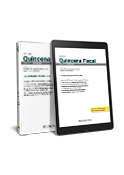
I am writing this article while preparing to move from one role to another, enjoying some readings about the Roman Empire and Julius Caesar. As, you probably know, I am a VAT person. Pillar Two and BEPS may not be my ultimate passion, and quite honestly, I really did not know what to write about this week, till I received a.n.o.t.h.e.r. notification in my email inbox about Pillar Two. My first thought was to realize that since their release, in December 2021, the GloBE Model Rules and the related Commentary, in March 2022, shed more ink than, Julius Caesar conquests chronicles of Gaul. So, I decided to read the 111 pages of the report. I can assure you that the European Court of Justice decision[1], about the adult content platform Only Fans, published yesterday, validating Art. 9a of Council Implementing Regulation (EU) No 282/2011 is way more exciting to read!
A few days ago, on February 2nd, the OECD/G20, Inclusive Framework on BEPS, released the administrative technical guidance Administrative Guidance on the Global AntiBase Erosion Model Rules (Pillar Two)[2] in order to assist governments implementing the 15% effective minimum tax rate on Multinational Enterprises (MNEs).
The document covers a range of technical issues related to Pillar Two, from the USA minimum tax, known as Global Intangible Low-Taxed Income “GILTI” to the Qualified Domestic Minimum Top-up Taxes “QDMTT”. It also includes elements on the GloBE rules, that are considered to need immediate clarification, in order to allow members in the process of implementing them to be reflected in their domestic legislation.
It seems to complete the technical guidance on Pillar Two by OECD, along with the release of December 2022 guidance documents:
- Safe Harbours and Penalty Relief: Global Anti-Base Erosion Rules (Pillar Two)[3]
- Public consultation document Pillar Two – GloBE Information Return[4]>
- Public consultation document Pillar Two – Tax Certainty for the GloBE Rules[5]
This administrative guidance takes the form of additions, clarifications, and modifications to the Commentary, which will be incorporated and released in a revised version later this year. It is divided into sections:
- Scope
- Income & taxes
- Application of GloBE rulesto insurance companies
- Transition
- Qualified Domestic Minimum Top-up Taxes
Section 1 – Scope
This section of the guidance covers several aspects of Chapter 1 on the Scope of the GloBE Model Rules.
It states it is important that monetary thresholds, in the GloBE rules, to be rebased in domestic legislation in a non-EUR denominated currency, as of the same date and using equivalent current exchange rates. Those rebased thresholds should apply consistently for the reporting fiscal year starting as of a common date following the rebasing, such as 1 January.
Also, it provides guidance on the deemed consolidation test that does not modify the accounting standards or alter the outcomes that are provided for under the relevant accounting standard.
It clarifies which financial accounts should be used for the purposes of the GloBE rules, particularly, the financial accounts that should be used in the calculation of deferred Tax. Such expense accrued in the Ultimate Parent Entity’s (“UPE”) consolidated financial statements for a Constituent Entity (“CE”) should be used.
This section provides guidance on the definition of UPE in article 1.4.1(a) as it applies to a Governmental Entity, as well as a sovereign wealth fund (“SWF”), which meets the definition of a Governmental Entity in article 10.1 will not be considered to be a UPE and will not be considered part of an MNE group.
Section 2 – Income and taxes
This section of the Administrative Guidance covers several aspects of Chapter 3 on GloBE Income or Loss, and Chapter 4 on computation of accrued covered taxes of the GloBE Model Rules.
First, it states that in the context of an intra-group transaction between CEs of an MNE group as described in article 6.3.1, the GloBE Income or Loss of the disposing CE is determined in accordance with article 3.2.3, which applies irrespective of whether the MNE group accounts for transactions between CEs at the disposing entity´s carrying value rather than based on fair value.
In the context of Excluded Equity (“EE”) gains or loss and hedges of investments in foreign operations, it states that the treatment of a net investment hedge should follow the treatment of the investment it is hedging, and a period of five-year election is recommended to treat foreign exchange gains or losses on a hedging instrument, as an EE gain or loss, to the extent that some conditions are met.
This section provides more clarification on the following points, that are not presented here in their order of appearance in the document:
- Definition of excluded dividends and ownership interest in article 10.1.
- Circumstances and conditions when article 3.2.1(i) only apply in the case of pension expenses that are provided through a pension fund.
- Taxes paid on deemed distributions in respect of ownership interests fall within the scope of article 4.3.2(e).
- Mechanism and elective administrative procedure for an excess negative tax expense carryforward in cases where article 4.1.5 applies.
- Election for debt release included in the financial accounting net income or loss shall be excluded from the computation of a CE´s GloBE income or loss, where the filing constituent entity elects to do so, only in certain limited circumstances.
Also, the present part of the guidance provides that certain outcomes are functionally equivalent under the GloBE rules, regardless of whether a jurisdiction permits a loss carry-forward or Foreign Tax Credit (“FTC”) carry-forward when there is a domestic source loss and foreign source income in the same year. Hence for this purpose, the GloBE rules hould give effect to tax attributes that are provided for, in lieu of a loss carry-forward, when there is a domestic source loss and foreign source income, in the same year.
Further explanation is provided that an equity investment inclusion election can be made with respect to a jurisdiction that includes profit, gain or loss with respect to an equity investment in the domestic tax base. Circumstances are set out in which such election can be made and its effect.
This section confirms that the US GILTI regime, in its current form, is a Controlled Foreign Company (“CFC”) tax regime under the GloBE rules, and to improve tax certainty and administrability of the GloBE rules in the first years of application, a special allocation methodology has been developed for Blended CFC tax regimes on a time-limited basis, which allocates allocable blended CFC taxes to low-tax jurisdictions. The proposed formula set out is for Fiscal Years that begin on or before 31 December 2025 but not including a Fiscal Year that ends after 30 June 2027.
- Blended CFC Tax Allocated to an Entity:
Deferred tax assets reflected in the financial accounts X Minimum Rate
Applicable domestic tax rate
- Blended CFC Allocation Key:
Attributable Income of Entity x (Applicable Rate – GloBE Jurisdictional ETR).
In the case of GILTI, the allocable blended CFC tax can be determined from the US shareholder’s US federal income tax return and in the absence of a domestic loss is equal to the amount of GILTI (reduced by the GILTI deduction) multiplied by 21%, less the foreign tax credit allowed in the GILTI basket:
((GILTI Inclusion – GILTI Deduction) x 21%) – GILTI FTC.
Section 3 – Application of GloBE rules to insurance companies
This section of the guidance covers several aspects of Chapter 7 on special rules applicable to Investment Entities (“IE”) and Insurance Investment Entities (“IIE”) of the GloBE Model Rules.
It provides further clarification on application of provisions in the GloBE Model Rules and Commentary that could lead to unintended results for insurance groups, and how these provisions are to be applied in the insurance context.
For an instance, it is stated that the taxable distribution method under article 7.6 of the GloBE Model Rules is extended to IIE. This notion is redefined by excluding them from the definition of Intermediate Parent Entity (“IPE”) and Partially Owned Parent Entity (“POPE”).
Furthermore, we see that it is proposed to set rules that generally treat additional tier one capital in the same manner as a debt instrument to restricted tier one capital instruments issued by insurance companies.
To avoid a distortive mismatch, an additional text is proposed to article 3.2.1(b) in relation to excluded dividends and excluded equity gain or loss from securities held on behalf of policyholders.
Specific rules are proposed regarding the application of the election provided at article 7.5 of the GloBE Model Rules to regulated mutual insurance companies, as well as adjustments related to dividends from short-term portfolio shareholdings and a new election are available to all entities and not just to insurance companies.
Section 4 – Transition
This section covers several aspects of Chapter 9 on Transition Rules of the GloBE Model Rules.
It clarifies that Deferred Tax Assets (“DTA”) on tax credit carryforwards are taken into account in computing adjusted covered taxes for GloBE purposes. Therefore, a simplified recast approach is included, when the applicable domestic tax rate is equal to or higher than the minimum rate, only. The recast amount for such DTAs shall be determined in accordance with the following formula:
Deferred tax assets reflected in the financial accounts X Minimum Rate
Applicable domestic tax rate
Further enlightenments are offered with respect to applicability of the limitation on asset transfers which take place after 30 November 2021 and before the commencement of a transition year, pursuant to article 9.1.3 of GloBE Model Rules. Also, all transactions and corporate restructurings that are recorded in a similar manner as an asset transfer, should be viewed as a transfer of asset for purposes of article 9.1.3, in specific situations.
In the context of the transition rule that is designed to prevent an MNE from stepping-up the GloBE carrying value of a capital asset through the use of an intragroup transfer, the document provides a general rule pointing out that the carrying value, that should be used for GloBE purposes at the beginning of the transition year, is the one upon disposition of the transferred asset on the day of transfer, and adjusted for capital expenditures, amortization or depreciation after the transaction and before the acquiring entity becomes subject to the GloBE rules.
Section 5 – Qualified Domestic Minimum Top-up Taxes:
This section sets out the general principles for determining whether a domestic minimum tax (“DMT”) is functionally equivalent to the GloBE rules and therefore constitutes a QDMTT. It assesses the two guiding principles in determining whether a minimum tax is functionally equivalent to the GloBE rules and therefore qualifies as a QDMTT:
- The minimum tax must be consistent with the design of the GloBE rules.
- The minimum tax must provide for outcomes that are consistent with the GloBE rules.
It exposes how the minimum must be designed and implemented in line with the architecture of the GloBE rules in a way by presenting a clear structure.
Chapter 1. Scope
A QDMTT must apply to domestic CEs of MNE groups that meet the €750 million threshold, in order to be functionally equivalent to the GloBE rules.
Chapter 2. Charging provisions
The new Commentary to the definition of QDMTT indicates that the latter applies exclusively with respect to domestic CEs. The charging provisions in article 2 of the GloBE Model Rules are not considered to be suited to a QDMTT. Therefore, in lieu of the article 2 charging provisions, a QDMTT should impose a top-up tax on one or more domestic CEs with respect to the excess profits of all domestic CEs, including the domestic parent entity.
Chapter 3. GloBE income or loss
The new Commentary specifies the following regarding the application of the functional equivalence test under a QDMTT:
- Financial accounting standard
- Local vs. reporting currency
- Permanent differences
- Income of a PE
- Income of a Tax Transparent Entity
Chapter 4. Adjusted Covered Taxes
To pass the functional equivalency test, the determination of adjusted covered taxes under a QDMTT must be the same or more restrictive than that under the GloBE Model Rules.
Chapter 5. Computing the Top-up Tax
The new Commentary to the definition of QDMTT addresses the following design elements regarding the computation of Top-up Tax under a QDMTT:
- Jurisdictional blending
- Top-up Tax formula
- Substance-based income exclusion
- Tax rate: must be equal or exceed the Minimum Rate (i.e., 15%).
- De minimis exclusion:
Chapter 6. Corporate restructurings and holding structures.
These rules are expected to harmonize the GloBE Model Rules with the common tax reorganization ones, because a QDMTT needs to include them to conform to the tax reorganization policies in the jurisdiction.
Chapter 8. Administration
A jurisdiction implementing a QDMTT will need to calibrate the filing obligation, interaction with agreed safe harbours and the QDMTT safe harbour. What is recommended is that the deadline for the QDMTT to facilitate the correct reporting of top-up tax liability to be filed no later than 15 months, after the last day of the reporting fiscal year, but with some exceptions.
Chapter 9. Transition rules
A jurisdiction adopting a QDMTT must adopt the GloBE transition rules:
- Tax attributes
- Transitional relief for substance-based income exclusion
- Exclusion from the UTPR of MNE groups in the initial phase of their international activity
- Transitional relief for filing obligations
Finally, undoubtfully, this administrative guidance provides very important information relevant to the interpretation and operation of the GloBE Model Rules, making it an essential component of the global minimum tax package.
However, it is announced that additional guidance will be developed and released. Also, governments are expected to use the above-mentioned rules into their domestic law. This demonstrates that, for quite some time, the tales, and chronicles of Pillar Two will continue haunting MNEs, who from their end, should identify the new rules and clarifications that are applicable to them.
You see why I call it never-ending tales?
[1]Case C-695/20 Fenix International Ltd.
[2] OECD (2023), Tax Challenges Arising from the Digitalisation of the Economy – Administrative Guidance on the Global Anti-Base Erosion Model Rules (Pillar Two), OECD/G20 Inclusive Framework on BEPS, OECD, Paris. www.oecd.org/tax/beps/administrative-guidance-global-anti-base-erosion-rules-pillartwo.pdf.
[3] OECD (2022), Safe Harbours and Penalty Relief: Global Anti-Base Erosion Rules (Pillar Two), OECD/G20 Inclusive Framework on BEPS, OECD, Paris. www.oecd.org/tax/beps/safe-harbours-andpenalty-relief-global-anti-base-erosion-rules-pillar-two.pdf.
[4]OECD (2022), Pillar Two – GloBE Information Return, OECD/G20 Inclusive Framework on BEPS, OECD, Paris. https://www.oecd.org/tax/beps/public-consultation-document-pillar-two-globe-information-return.pdf
[5] OECD (2022), Pillar Two – Tax Certainty for the GloBE Rules, OECD/G20 Inclusive Framework on BEPS, OECD, Paris. https://www.oecd.org/tax/beps/public-consultation-document-pillar-two-tax-certainty-for-the-globe-rules.pdf




